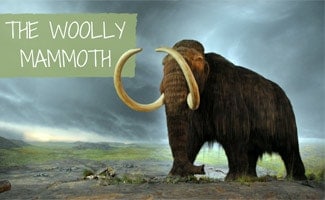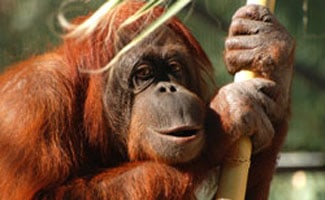The Green Anole Can be Found in the Southeast United States
 The green anole can be found throughout the southeastern United States running wild; however, these arboreal lizards can also be found in pet stores throughout the United States. In this article we will cover just what it is that makes the green anole a great candidate for anyone looking for a pet lizard. In addition to why these lizards make great pets, we will also cover their physiological appearance, behavior, diet and captive care.
The green anole can be found throughout the southeastern United States running wild; however, these arboreal lizards can also be found in pet stores throughout the United States. In this article we will cover just what it is that makes the green anole a great candidate for anyone looking for a pet lizard. In addition to why these lizards make great pets, we will also cover their physiological appearance, behavior, diet and captive care.
What is the Green Anole?
The green anole is more commonly known as the Carolina anole or Anolis carolinensis and is native not only to the southeastern United States but also to some of the Caribbean islands. The green anole is also referred to as the American anole and the red-throated anole or the American chameleon even though it is not actually considered to be a true chameleon. Most commonly this species of lizard is found from North Carolina south to Florida and while they are most often found in trees they can live just about anywhere. The green anole is a member of the Anolis genus in the Polychrotidae family.
Taxonomy of the Green Anole
The Order Squamata
The green anole is a reptile in the order Squamata. Reptiles in the Squamata order are recognized by the presence of scales or shields and the presence of quadrate bones which allow them to extend their top jaw to permit large prey to pass in to the mouth. The Squamata order is the largest of all reptile orders and not only includes lizards but it also includes snaked as well. Reptiles that are classified in the Squamata order range incredibly in size from under one inch in length to over 26 feet in length. The green anole measures in at between 5 to 8 inches long.
The Family Polychrotidae
Animals that fall in to the Polychrotidae family are most often referred to simply as anoles. There are currently four recognized genera within the Polychrotidae family, these include: Anolis, Norops, Phenacosaurus and Polychrus. The green anole falls in to the genus Anolis. Many times lizards in the family Polychrotidae are referred to as being American chameleons or geckos but this is something of a misnomer since the green anole is not related to either of these species. This common misunderstanding is often derived from the fact that anoles tend to show the ability change the color of their skin in addition to being able to run up walls. Ironically though, anoles are more closely related to iguanas, a species that does not show either of these tendencies.
There are a number of different anole species and while the green anole is the only species native to the United States, it is becoming much less numerous as the Cuban Brown Anole pushes in to its territory. As the population of the Cuban brown anole grows it continues to push the native green anole northward. This dispersing of the green anole population is somewhat strange since while both of these species inhabit the same geographical area, the brown anole is a terrestrial lizard where the green anole is arboreal. While the Cuban brown and green anoles are the most recognized anole species in the United States there are currently believed to be some 400 species of anole all together.
The Genus Anolis
The genus Anolis contains some 400 of the world’s lizard population within the Polychrotidae family and as such it is representative of the world’s most species rich amniote genus. Amniotes are recognized as a group of tetrapods that have an egg adapted to terrestrial life. Of all species in this genus the green anole is the only species to have had its complete genome sequenced in the world genome project. One of the most fascinating aspects of reptiles within the Anolis genus is their ability to adapt to their ecological surroundings to ensure that there is plenty of food available and that they are best evolved to survive their surroundings. In the past scientific research has proven the amazing capability of the Anolis genus to adapt after the reptiles were introduced in to a lizard free island and the evolution of the species was monitored. So much research has been conducted in fact that the evolutionary pattern of the Anolis when introduced to a lizard free territory can now be predicted.
The A. Carolinensis Species
The green anole is otherwise referred to as the Anolis carolinensis. There are currently two recognized subspecies of the Anolis caolinensis: the Anolis carolinensis carolinensis and the Anolis carolinensis seminolus.
Physical Characteristics of the Green Anole
The Coloration of the Green Anole
Although the name “green anole” suggests that all members of this species are bright green in coloration, their color actually can range from amazing bright green to dark brown. The brilliant color of the green anole is the result of three different pigment cells: the cyanophores, the xanthophores and the melanophores. Collectively these three cell layers are referred to as the chromatophores. The cyanophores are responsible for producing blue pigmentation, the xanthophores are responsible for producing yellow pigmentation and the melanophores are responsible for black or brown pigmentation. The black and brown pigmentation are more often than not observed when the green anole is cold or under extreme amounts of stress.
On occasion, as with many types of animal, mutations can occur within genes that result in a green anole being a number of other colors. These mutations occur when one of the three pigment genes listed above is missing, this causes the prominence of another color such as blue or yellow. It is estimated that around 1 in every 20,000 green anoles is born completely blue as a result of this type of mutation. In captivity however, many people try to breed specifically for these types of mutations believing that they make the lizard more valuable when this is not the case. When these types of mutations occur in the wild the mutated anole rarely lives a full live since it lacks the correct pigmentation to camouflage itself in its natural habitat. In addition to being much easier for predators to spot, these mutated green anoles are also easier for prey items to spot which makes catching a meal particularly difficult.
The Throat Fan
The throat fan is a particularly distinguishing feature that can be seen on the male green anole. The throat fan has a pink color to it and plays a role in both mating and in territoriality. A male anole will defend its territory from other male anoles by puffing out its pink throat fan. Males also attract mates through displaying their pink throat fan to let the female of the species know that they are interested in mating. The pink throat fan is what enables the green anole to easily be distinguished from the brown anole. When the green anole is cold or threatened they will turn to a brownish color and this can make them difficult to distinguish from brown anoles.
Ecological Distribution of the Green Anole
The green anole, as mentioned before can be found in the southeastern United States, most commonly in Georgia and South Carolina. These reptiles tend not to live in mountainous areas though. When it comes to the habitat that these creatures prefer, green anoles much prefer to live in trees but can also be spotted in urban areas sunning themselves on the sides of buildings or on rooftops. The warm weather is what these lizards tend to prefer and for the most part these diurnal critters spend their waking hours soaking up the sun. Once the weather cools down however, the green anole takes shelter underneath tree bark or anywhere else it can take refuge and maintain some degree of warmth. Occasionally when the temperature drops significantly a number of green anoles can all be found hiding in one place, this allows for warmer conditions. This type of communal living is not unusual for the green anole.
The Diet of the Green Anole
The green anole is an insectivore and tends to prefer feeding on live insects and spiders. On occasion anoles will also feed on other invertebrates but for the most part they are content with a steady supply of smaller insects. When keeping a captive green anole it is important to provide a varied diet of live insects such as crickets, waxworms and mealworms. Where a wild green anole has access to variety in their diet, the captive anole only has access to what it is fed so it is important to vary diet in order to provide a variety of nutrients. When feeding captive green anoles it is often recommended to feed “gut loaded” insects. Gut loaded insects are living insects that have been fed supplements to increase their nutritional value for the anole. Feeding for the captive green anole varies depending upon the age of the anole. Young juvenile anoles require feeding twice a day and adults only require feeding three to four times a week. When feeding the captive green anole it is important only to feed an amount that can be finished by the end of the day.
In addition to feeding gut loaded insects to increase nutritional value of their food, it is important to dust the green anole with a calcium supplement twice a week. Captive anoles require a calcium supplement in order to prevent developing bone malformations that can result from having a diet that is low in calcium. It is equally important not to over apply a calcium supplement as it is to under apply the supplement because just as health concerns can result from low levels of calcium they can also result from too much calcium.
Offering water to a green anole can be a confusing subject because of the perils of offering water bowls to certain other types of reptiles. Putting a water dish in with a green anole however is perfectly fine; just ensure that the dish is shallow. Water should be changed on a daily basis in order to keep it clean. It is also recommended to spray a mist of water in the green anole’s habitat each day in order to make sure that humidity levels remain where they should be.
Housing a Captive Green Anole
Ensuring that a habitat is right for the green anole is not a concern when it comes to anoles living in the wild; however, keeping a green anole in captivity is another story all together. It is important to provide adequate space for the green anole in captivity since these creatures are used to having large areas to roam. The green anole is also a communal creature as mentioned above so it is important to take in to consideration the space needed for multiple anoles when purchasing a terrarium. The minimal terrarium size for the green anole is approximately 10 gallons but as with most lizards the larger the terrarium the better. The top of the terrarium should have a screen lid that allows for proper ventilation in addition to preventing the anoles from escaping.
When putting together a terrarium for your green anole it is important to line the floor of the tank with a good two to three inches of bark bedding or coconut fiber in order to help maintain appropriate humidity levels. Changing the floor bedding completely is something that should be done once a month but between that time it is important to remove waste from the tank at a minimum of once a week. It is important to provide the green anole with a heat lamp to allow it to bask in the warmth much as it would do in the wild.
While you may be tempted to play with your green anole or your green anole community it should be noted that these lizards do not care to be handled too frequently. This reptile will lose its tail if it is handled too frequently. With that said, the anole is a rather gentle reptile when it is used to being handled and when housed with appropriate tank mates. In order to avoid aggressive displays within green anole communities it is important to avoid placing two males within close proximity of one another. It is generally preferably to keep one male in a tank with the other individuals in the community being female.
Anole Behavior
Observing the behavior of the green anole is one of the more entertaining aspects of keeping an anole community within your terrarium. Much like Betta fish, anoles can be observed charging or displaying their throat fans at their own reflection in the side of the terrarium. If a captive anole becomes too stressed however, they display this behavior the same way that they would in the wild by exhibiting a dark brown or black color and becoming much less active than they usually would be. A healthy green anole is always aware of their surroundings and never appears to be lethargic.
Anole Reproduction
Green anoles generally breed from early April to late August, in the wild the male anole will display his throat fan or dewlap and dance for the female to gain her attention; however she may run from the male until she decides that she is ready to mate. When the female is ready to mate she will either bow in front of him or allow him to catch her so that he can mate with her. It can take anywhere from two to four weeks after mating for the female to lay her eggs, the first clutch of eggs generally consists of one to two eggs. Throughout the season a female anole can lay as many as ten eggs which she will bury in soil to keep them incubated and safe; however, she will not tend the eggs and once they are buried she will have no further part to play with them.
The green anole eggs will incubate for around 30 to 45 days during which time the warmth of the sunlight will keep them warm and the eggs will keep the young nourished. Once the eggs begin to hatch the newborn anoles are on their own since neither of the parents remains to rear the young. The hatchlings tend to scatter and live solitary lives taking care of themselves but they must be sure to avoid running in to other adult anoles or lizards in addition to traditional predators if they have any hope of surviving childhood.
Why is the Green Anole So Important?
A number of people question why the green anole is such an important reptile but there really are a number of reasons why such a tiny creature is so important. One of the bigger reasons why the green anole plays a large part in its natural habitat is the fact that these lizards help to moderate the insect population. Without a healthy anole population the American southeast would be overrun by small insects that could not only destroy crops and play nuisance to people, but they can also spread a number of diseases to the human population.
Aside from moderating insect populations there is also the consideration that the green anole is the single representative model of reptile for reptile genomics in studies performed by the National Human Genome Research Institute. The green anole was selected as the model reptile for this research because of the ease of breeding, the low cost involved with their maintenance and the value of the evolutionary developments of the genus. What does that mean to you? It means that the research that has been conducted in reference to this amazing reptile has successfully sequenced the genomes of diversification of the species, research that contributes a significant amount of data to understanding the evolution of amniote species as a whole.



